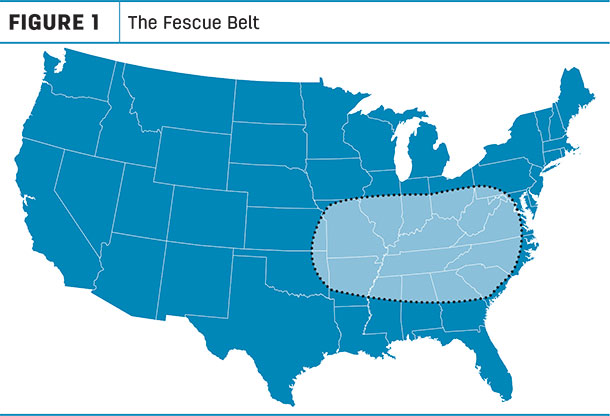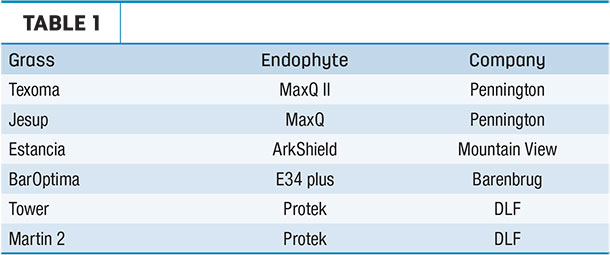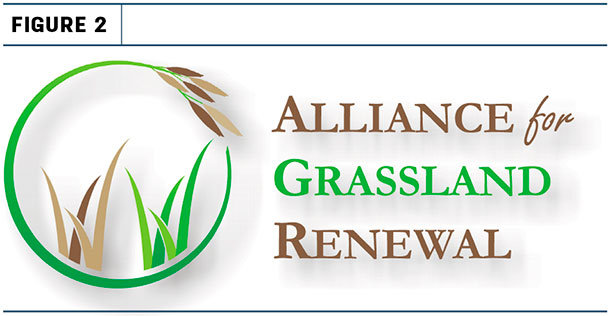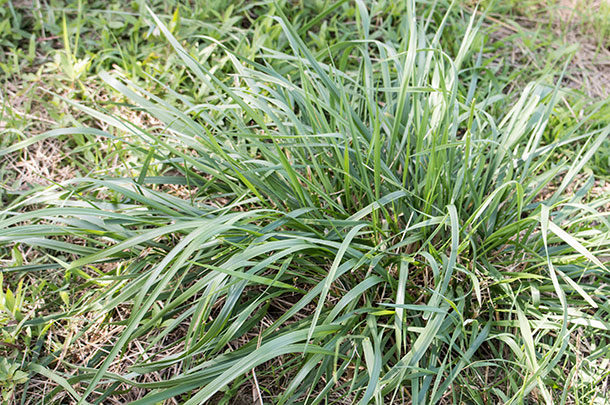In recent years, however, the question has not been about alfalfa, at least in my office. It has been about novel endophytes. I expect to get many such questions in August and early September, as this is planting season. The question is coming from cattlemen who want a durable perennial grass that is not toxic to their livestock. In this article, the question will be answered in three parts and will speak to cattlemen in the fescue belt (see Figure 1).

Answer – Part 1
The first and most important part of the answer is to make sure you are purchasing a true novel endophyte. When you go to the seed store, you may find yourself discussing products with a salesperson who does not know or fails to appreciate the difference between novel endophyte tall fescue and endophyte-free tall fescue. Not always, of course – but often. In some cases, our cattlemen have gone into the store intending to buy a novel endophyte, but they left after being talked into an endophyte-free variety.
All novel endophyte varieties currently available are superior to all other tall fescue varieties. Yes, it is true that endophyte-free tall fescue can survive in non-stressed environments, as would occur in regions with deep soils and short summers. But in the fescue belt, endophyte-free varieties do not survive consistently. They frequently die out because of drought, insects and pathogens.
In Table 1 are the novel endophyte varieties that are currently on the market. Note that the varieties are combinations of a grass host plus an endophyte strain. For example, when people say they planted MaxQ, they usually mean they planted Jesup infected with the MaxQ endophyte.

In addition to the varieties in Table 1, new ones will be coming to the marketplace. For example, one highly publicized variety is Lacefield tall fescue. It was released by the University of Kentucky and named after Garry Lacefield, the renowned forage specialist at Princeton, Kentucky. This variety will be widely available in 2018.
Answer – Part 2
The second part of the answer is to purchase a bag of seed that has the alliance seal somewhere on it (see Figure 2). This seal protects the farmer from fraudulent and inferior seed. It ensures that the endophyte in that seed lot is nontoxic to cattle and is alive. The seal and its quality standards were developed by the Alliance for Grassland Renewal, a nonprofit group of cattlemen, university researchers, seed companies, government workers and other nonprofit foundations.

When the alliance seal appears on a bag, it is accompanied with a statement that the seed lot was tested and found to contain no more than 5 percent off-type endophyte. In other words, 95 percent of the endophyte in that seed lot is nontoxic. The statement also tells the producer that at least 70 percent of the endophyte is alive. This is important. If the endophyte is dead, planting that seed will produce a field of endophyte-free tall fescue.
There is no reason to purchase a novel endophyte variety that lacks the alliance seal, assuming the seal is available in your state. It would be the same as purchasing seed alleged to be certified without a certified tag on the bag. And there is no cost to the producer. Seed that includes the alliance seal costs the same as seed without the seal.
Answer – Part 3
The third part is to decide which variety works best on your farm. While they are all excellent varieties, they are slightly different. Some are soft leaf varieties. Some have second-generation endophytes. Some were developed over a wide region. Some are early maturing.
To discuss the unique traits of each variety, it is best to visit directly with a company rep. If you do not know a company rep in your area, contact any of the four companies – Pennington, Mountain View, Barenbrug and DLF – by the information listed on the Alliance for Grassland Renewal website. ![]()
Craig Roberts is an agronomy professor and forage specialist at the University of Missouri. Email Craig Roberts.
PHOTO: In Missouri, 90 percent of all hay is fescue – Kentucky 31, endophyte-free or novel endophyte varieties. Staff photo.










